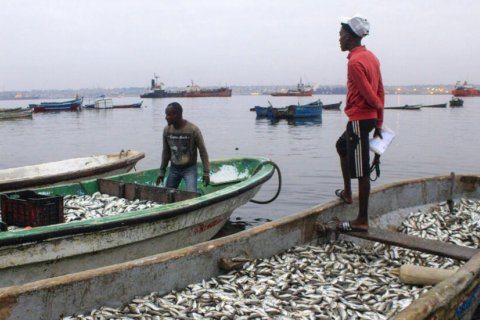In a statement to which VerAngola had access, the provincial government of Namibe explained that, when completed, the project will connect Angola and Namibia via the Moçâmedes Railway (CFM).
"The connection between Angola and Namibia will be made by the Moçâmedes-Lubango-Cunene line, covering a distance of 400 kilometres", the provincial government said.
According to Harold Luttichau, head of the consortium – who was speaking within the scope of the presentation of the project to the Namibe government last Thursday –, the project includes the construction of a new 400-kilometre railway section between Lubango and Cunene, as well as the requalification of the existing line between Lubango and Moçâmedes.
The works are expected to last 15 months, and this project will bring "great benefits not only to Angola and Namibia, but to four other countries in the region".
The head of GBD also explained that everything that will be transported on this line "will end up at the Port of Namibe".
"This rail link project will bring a lot of benefits, not only to Angola and Namibia, but to four other countries in the region. Everything that will be transported on this line will end up at the Port of Namibe. At the start of the project, we will focus on the existing difficulties and then move on to the next phase", he explained, quoted by Jornal de Angola.
According to the provincial government of Namibe, the project should also boost job creation, giving priority to citizens living along the future line.
"The project foresees the creation of jobs, with priority for the community living along the line to be built and rehabilitated, will increase the turnover of the Port of Namibe and boost economic activity in the southern region corridor", reads the statement.
Francisco Mário, a CFM delegate, highlighted the importance of the 'Trans-Cunene' for the development of transport in Namibe, as well as for stimulating trade in the Southern African Development Community (SADC).
He therefore considered that the project "will precisely complete this multimodal transport between the Southern Region Corridor and the port of Namibe, which is related to the export of raw materials that are abundant in the south of Angola".
"It will also create a value chain for transport and the employability of young people who will work on the project. At the same time, the various economic operators in the region will compete to explore this value chain", he said, quoted by Jornal de Angola.
While Domingos Delfim, executive director for the Commercial Area of the Port of Namibe, informed that the project will be included in the rehabilitation plan for Moçâmedes Bay.
"At the moment, 90 percent of the goods handled at the Port of Namibe are for export, and with the completion of the Moçâmedes Bay Integrated Project, which is scheduled for November 2025, we expect to triple the volume of cargo handled," the official added.
According to the provincial government of Namibe, the 'Trans-Cunene' was presented by Harold Luttichau, and on the occasion, a delegation from CFM, led by the administrator for the Technical Area, José Gaspar Kamunda, was received by the deputy provincial governor of Namibe, Abel Kapitango.







